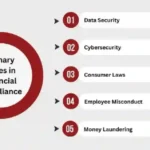PicTurf is an imaginative and powerful online platform that excites fans all over the world. Advertising a blend of real-time race recreation, data analysis, and an energetic commercial hub for members, PicTurf has become a trendy hub for those looking to pick an edge in the world of computerized racing. In this article, we will maximize your chances of victory in competitive picturf races, with winning strategies uncovered through a data-driven approach.
What is picturf?
PicTurf is an online gaming platform centered around horse racing, but with a sophisticated twist. Not at all like conventional betting stages or entertainment, PicTurf employs calculation, entertainment, and a computerized biological system where steeds and players are connected in an immersive virtual environment. This online racing stage allows players to breed, prepare, race and oversee their virtual steeds while taking an interest in a commercial hub where they can buy, offer and exchange these advanced assets.
Entertainment Virtual racing uses blockchain innovation to offer simplicity, security, and authenticity of engagement. Players can connect to the stage using various in-game tokens, enhancing PicTurf’s gamification perspective. As the computerized world of Picturf continues to evolve, so does its complexity, advertising members have more ways to lock in diversions and increase their chances of success.
Latest Race Insights
In order to stay ahead on PicTurf, it’s important to experience the most recent races. These bits of knowledge come from a combination of race data, horse performance measurements and in-depth analysis provided by the stage. Let’s look at the essential bits of knowledge that can allow players an edge in their solid strategies.
1. Horse Execution Metrics
One of the most fundamental angles to succeeding on picturf is understanding the execution of the steeds involved in each race. Each horse in entertainment has a unique set of characteristics such as speed, stamina, agility and race history. Players should focus on these qualities when choosing which races to enter.
For instance, steeds that have appeared consistently tend to perform better in comparable situations within specific races. Understanding racecourse, individual and climate conditions is important when selecting your horse. Some steeds may exceed expectations in long-distance races, while others may perform superiorly in short sprints or on tracks with some bends.
2. Race conditions and track type
Each race on PicTurf is facilitated on individual tracks and the conditions on these tracks can drastically affect the outcome. Some tracks are known for speed, while others are designed to test stamina or skill. Also, the virtual climate structure of PicTurf may affect the race in ways that may not be immediately apparent.
Race experience such as the choice of track, its surface (earth, turf, or made), and climatic conditions can help players make educated choices about which races to run and the ideal method to use. For example, if a race is held on a sloped track, steeds that have strong stamina but can put less footwork may perform superior to those known for breaking speed.
3. Analyzing past race data
Pikturf offers players a rich dataset to analyze, calculating about past races. By looking at these races, players can recognize designs and patterns that demonstrate which types of steeds are performing well under certain conditions. Look for consistent champs in comparable track conditions, and see how individual steeds perform over a variety of races.
Race information such as times, margins of victory and past race positions can be used to predict future executions. This data-driven approach is fundamental to players who need to move past luck and use skill and strategy to climb the rankings on PickTurf.
The winning method in PicTurf
To maximize your victory on Pikturf, players need to use critical approaches that take full advantage of the bits of knowledge accessible on the stage. Winning on PicTurf isn’t just about a fast horse—it’s about making data-informed choices, understanding the elements of each race, and timing your moves for the best results. Here are a few key strategies to help you rule the competition.
1. Techniques of horse breeding and determination
In PicTurf, breeding is a key part of the gameplay. Players can crossbreed steeds to create siblings with key traits. A well-bred horse can offer significant points of interest, but this requires an understanding of hereditary traits passed down through the ages. Breeding methods should focus on combining steeds with complementary vigor.
When selecting a breeding set, consider the characteristics required for race selection and victory. Incidentally, if you need to breed a horse that is more capable than expected in a sprint race, you can select parents with unusual speed traits. If you are focused on long-distance events, then stamina should be required. By breeding steeds with complementary abilities and qualities, you can create the perfect racing specimen.
2. Preparing Your Steeds for Success
Once you have selected or bred the ideal horse, preparation can be another important step. At Pikturf, steeds can be prepared to advance their original characteristics. Creating a preparation schedule that upgrades the horse’s qualities and minimizes his faults is fundamental to making progress in horse racing.
For example, if your horse has strong running ability but struggles with stamina, consider focusing consistency of preparation on his execution in longer races. On the other hand, if your horse is now a strong entertainer in the long run, you can concentrate on speed work to make him more competitive in the short sprints.
Training should be balanced based on up and coming races. Players should survey the upcoming events and prepare their steeds alike, whether the race is long or short, or whether the track favors speed or stamina.
3. Time your run
One of the most basic methods of picturf is knowing when to race your horse. It’s easy to be tempted to enter every race, but some time constraints can lead to superior results. By monitoring your horse’s fatigue levels and planning for races that suit the horse’s abilities and qualities, you can put him in situations where he may underperform.
Proper race planning includes supervising your horse’s recovery time. Entering numerous consecutive races alongside a horse without adequate rest can lead to a miserable execution. By guaranteeing that steeds are well-rested and executing their crests, players can maximize their chances of winning.
4. Benefits of the in-game marketplace
PicTurf’s in-game commercial center is an essential tool for strategizing victory. Players can purchase, offer, and exchange steeds with other clients, allowing them to approach steeds with specific traits or unusual traits. This trading center allows players to expand their racing strategies by collecting steeds to complement their stable.
If you want to strengthen your stable powerless range, consider acquiring steeds with missing attributes. Commercial centers also allow you to offer steeds that no longer fit your schedule, turning your computerized resources into a source of pay. A compelling trading strategy, combined with knowledge of horse execution data, can give you a significant edge on the picturf.
5. Participation in community races and tournaments
PickTurf offers a variety of community-driven events and competitions that offer additional opportunities to pick up prizes and advance your racing methods. By participating in this event, you can pick important participation and see the strategies of other productive players.
Community events regularly highlight unused challenges and tracks, opening up your steeds to test under unique conditions. By attending these events, you can experience the methods used by beat players, which you can integrate into your demanding game.
PicTurf: The Future of Computerized Racing
As PickTurf continues to advance, so do the techniques and methods used by its players. The phase is expected to incorporate more advanced innovations such as artificial intelligence and machine learning to advance race reengineering and actually deliver more data-driven insights.
Looking to the future, Pikturf can offer real-time changes based on changing climate conditions, encouraging each race to upgrade its authenticity and challenge. It could also expand its trading hub and introduce more customization options for steeds, giving players more control over their racing stable.
Furthermore, with the concerned development in blockchain innovation, PicTurf is ready to take full advantage of the Decentralized Funding (DeFi) framework, allowing players to use cryptocurrency for exchange and gain rewards in a modern way. This opens up predictable outcomes for players to lock in a more complex system related to horse ownership, exchange and racing.
Conclusion
PicTurf has revolutionized the world of computerized racing, creating an immersive and competitive environment for advertising players where methods, data investigation and alert systems can make all the difference. By understanding horse performance metrics, analyzing race data, and using sound reproduction and preparation strategies, players can unlock winning potential within the PickTurf ecosystem.
With the proliferation of real-time race bits of knowledge, advanced preparation techniques and a thriving commercial hub, PicTurf more than justifies a computerized racing involvement. It is a progressive phase where the latest developments in gaming, blockchain and analytics converge to create a compelling world for computerized racing enthusiasts.
By using the methods and experience described in this article, players can stay ahead of the competition and achieve victory in the growing world of PicTurf. Whether you’re a tenderfoot or a seasoned player, PicTurf has room to constantly develop and refine your racing technique. The future of advanced racing is looking bright, and PicTurf is on the cutting edge of this powerful untapped period.










Important Posts
How to Overcome Fear and Step Out of Your Comfort Zone
Current Trends & Practical Tips for Everyday Life
Breaking News & Insights – Stay Updated on General Topics